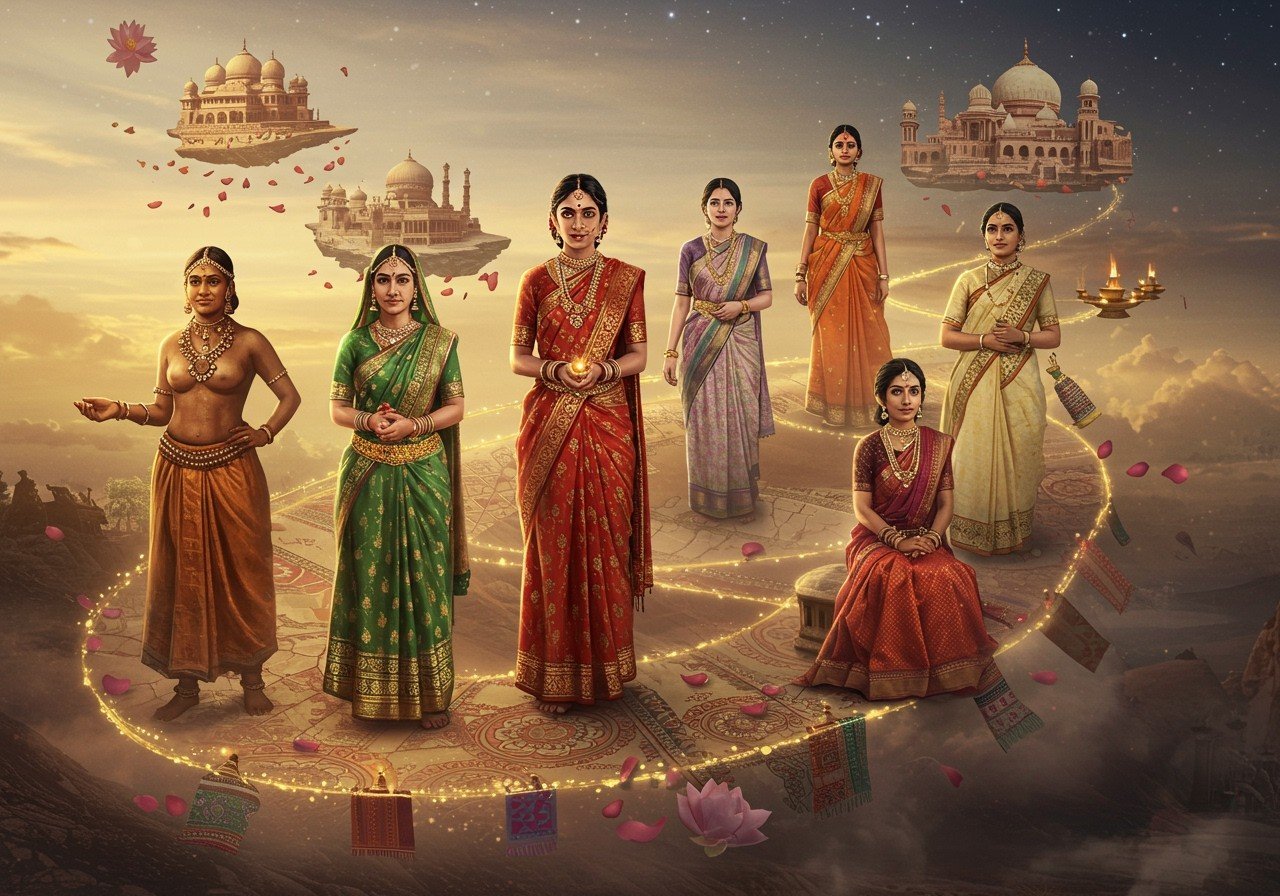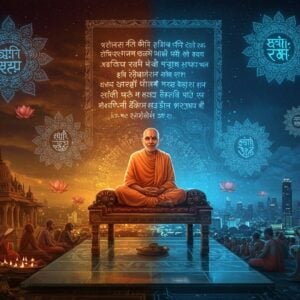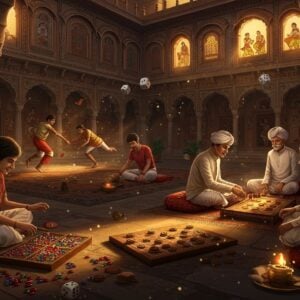
The history of Indian fashion is a vibrant tapestry woven with threads of ancient customs, regional diversity, and global influences. Let’s embark on a journey through time to explore the evolution of Indian attire.
Ancient Roots
- Indus Valley Civilization (c. 2700 BCE): This era reveals the use of woven cotton fabrics. Archaeological findings showcase draped garments for both men and women, adorned with jewelry like bangles and necklaces. This period laid the foundation for future clothing styles in India.
- Vedic Period (1500-500 BCE): The Vedic Period introduced simpler garments. Men wore the dhoti, a cloth wrapped around the waist and legs. Women wore a saree-like garment known as the antariya, marking the beginning of draped attire that continues to be popular today.
- Maurya Empire (321-185 BCE): During the Maurya Empire, clothing became more refined. The use of silk and cotton increased, signifying a shift towards more luxurious materials and intricate weaving techniques. This era also saw the development of natural dyes, adding vibrancy to the garments.
- Gupta Empire (320-550 CE): The Gupta Empire witnessed the emergence of the saree as a prominent garment. This period is considered a golden age for Indian art and culture, and this is reflected in the intricate designs and embellishments found on clothing. The saree, in particular, became a symbol of feminine grace and elegance.
Dynasties and Empires
- Post-Vedic Era: Dynasties like the Mauryas, Sungas, Guptas, and Kushans saw widespread use of fabrics like wool, silk, cotton, jute, linen, and muslin. Women wore the *antariya* in various styles, showcasing the versatility of this garment. This era marked a period of experimentation with different materials and draping techniques.
- Mughal Empire (1526-1857 CE): The Mughal Empire brought opulence and grandeur to Indian fashion. The introduction of the anarkali suit, with its flowing silhouette and intricate embroidery, remains a popular style even today. This era also saw the introduction of luxurious fabrics and embellishments, influencing the evolution of traditional Indian attire.
Colonial Influence
- British Rule: The British colonial period brought Western influences into Indian fashion. Indian men started adopting Western clothing styles, sometimes blending them with traditional Indian elements. Women began wearing petticoats and blouses under their sarees, a practice introduced by Europeans. These adaptations marked a significant shift in Indian dressing habits.
Post-Independence Era
- Revival of Traditional Textiles: Post-independence India saw a renewed focus on traditional textiles and designs. This led to the rise of “ethnic chic,” with garments like the saree, dhoti, and ghagra choli remaining popular choices for both everyday wear and special occasions. The emphasis on local craftsmanship and traditional techniques helped preserve India’s rich textile heritage.
- Emergence of the Fashion Industry: The late 1980s and 1990s marked significant growth in the Indian fashion industry. Increased exposure to global fashion trends and economic liberalization fueled this growth. This period saw the rise of Indian fashion designers who began to gain international recognition.
- Fashion Education: The establishment of the National Institute of Fashion Technology (NIFT) in 1986 played a crucial role in formalizing fashion education in India. NIFT provided training to aspiring designers, contributing significantly to the growth and professionalization of the Indian fashion industry.
Contemporary Trends
- Fusion Wear: Fusion wear, blending traditional Indian clothing with modern elements, has become a defining trend in contemporary Indian fashion. This style reflects the evolving tastes of modern Indians who seek to embrace both their cultural heritage and contemporary fashion sensibilities.
- Innovation: Indian fashion designers are constantly experimenting with new fabrics, designs, and styles. This spirit of innovation keeps Indian fashion dynamic and exciting, pushing the boundaries of traditional attire while staying true to its roots. The use of sustainable materials and ethical production practices is also gaining traction.
- Global Influence: Indian fashion continues to be influenced by global trends, and vice-versa. Indian embroidery techniques and traditional motifs are now seen on international runways, showcasing the global appeal of Indian craftsmanship. This cross-cultural exchange enriches both Indian and international fashion landscapes.
Poojn.in: Your Destination for Traditional Ritual Wear
Looking for authentic attire for religious ceremonies? Poojn.in offers a curated collection of traditional clothing and accessories. Explore our range of pure cotton dhotis, ideal for pujas and ceremonies, turmeric cream, and handcrafted Topor-Mukut sets for Bengali weddings. We also offer traditional suti gamchas for ritual use. Poojn.in makes it convenient to access authentic ritual wear online, ensuring quality and adherence to traditional requirements.
Embrace the rich heritage of Indian fashion with Poojn.in. Discover a wide selection of products that celebrate tradition and innovation. Visit poojn.in today!


